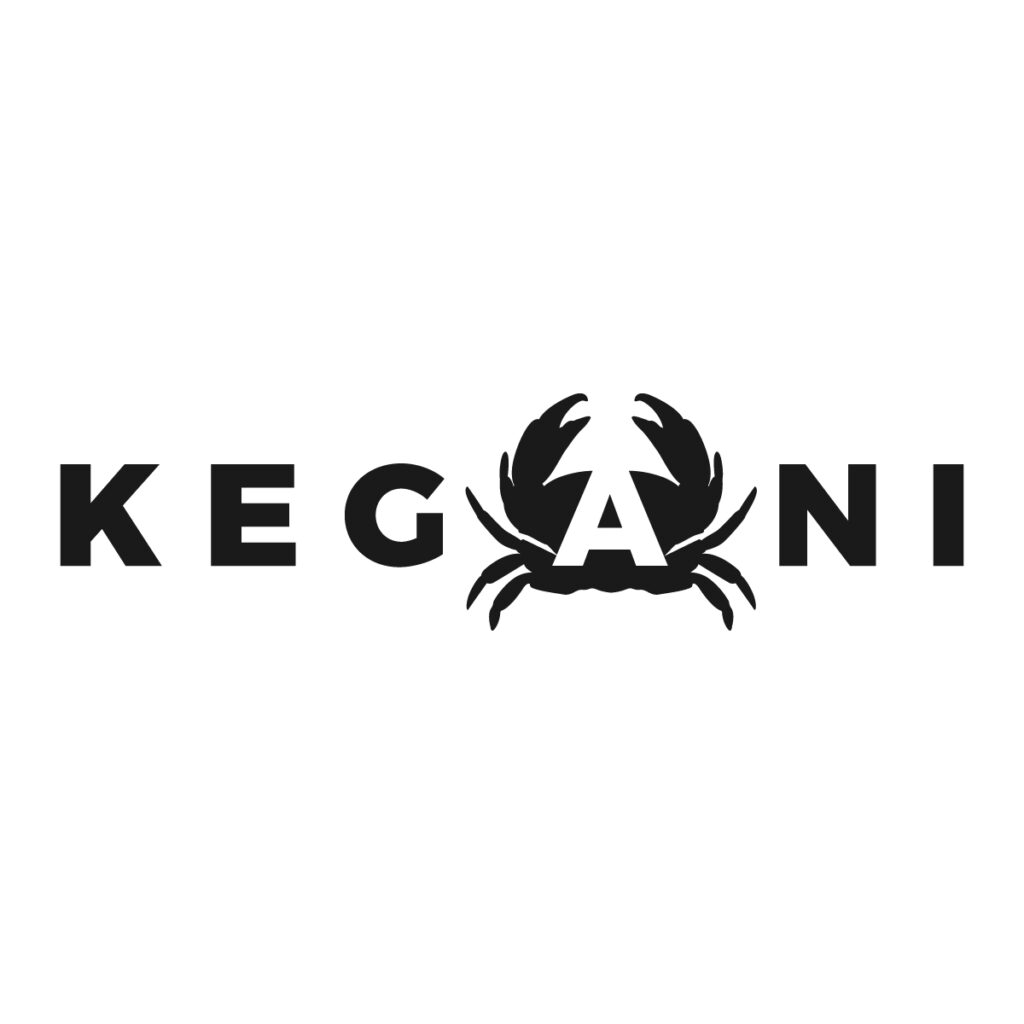Manufacturing a knife is as hard as you’d imagine. It requires experience, necessary skills and equipment. It’s also a fascinating job, if you ask me. Transforming a dull steel bar into sharp, shiny blades is a true work of art.
As a knife factory located in the knife capital of China, Kegani is thrilled to share our knowledge of knife manufacturing. We want to give you a sneak peek into how the magic happens. Kegani primarily utilize the latest CNC manufacturing and advanced heat treatment techniques, replacing traditional forging methods. This allows us to forge knives made from all types of steel, including powder metallurgy steel, which is almost impossible to work with for hand-forged knives. Additionally, we incorporate steps involving human input, such as blade grinding and sharpening, while maintaining strict quality control and testing procedures.
The general steps of making a knife can be divided into: pre-manufacturing, shaping, heat treatment, sharpening, and finally testing and packaging. We’ll delve into each of these steps in the article below.
1. Blueprinting
Everything great starts with an idea. Your vision for the knife, what you want it to do and to be, a rough draft is the first step of making a knife. Draw everything up and make all the necessary decisions for its design before getting your hands dirty on the mechanical stuff.
The design and drawing phase is often initially completed on paper, then transferred to CAD and/or Fusion 360 for computer manufacturing. Here, precise measurements can be visualized. These drawings are then used to create a mold or fed into a CNC machine to cut out the shape of a knife’s blade.
Several key aspects regarding the knife’s design greatly impact its use and quality. These include the blade shape, handle design, opening and locking mechanisms, specific parts, edge, bevel, among others.
2. Choosing materials
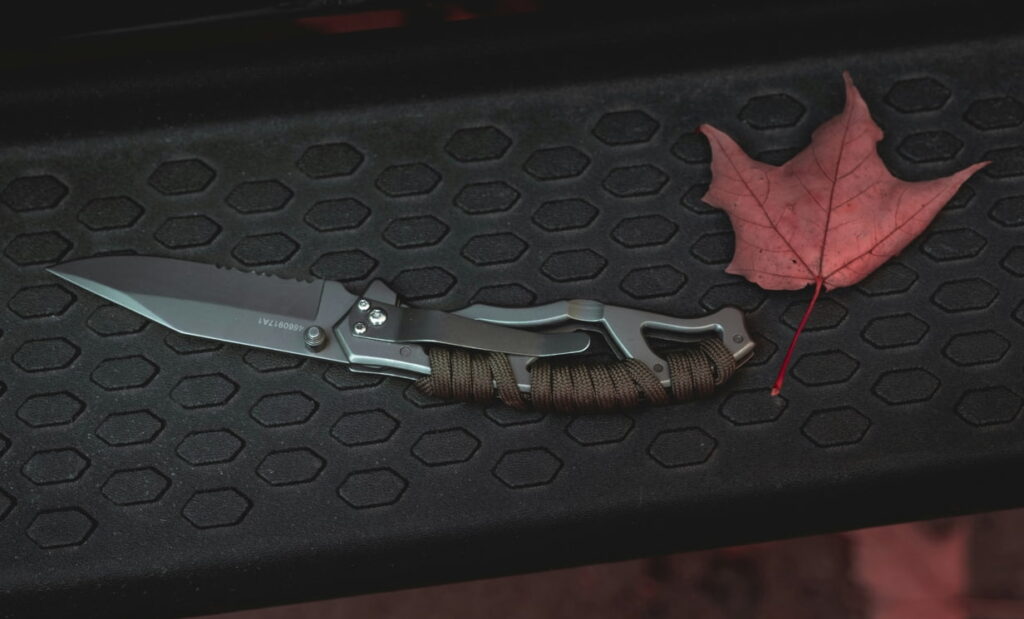
The next step, intuitively, is to determine which material to use. Choose materials that best suit your design and vision. Do you want a durable blade with impeccable resistance to rust? Then 14C28N would be a fantastic choice. Besides 14C28N, VG-10, M390, D2, S35VN, and 8Cr13MoV are all popular choices as knife blade materials. There is much to discuss regarding this topic. Choosing the correct knife steel is a vast subject in itself. We’ll scratch the surface of this topic in this article, but we highly recommend checking out the articles we’ve linked.
Steels can be evaluated in several aspects, including hardness, edge retention, toughness, rust resistance, ease of sharpening, and workability that concerns manufacturers more. Steel often involves trade-offs between these characteristics. If a premium steel excels amazingly in all these departments, like CPM MagnaCut, it is obviously much more expensive and often harder to manufacture.
Choosing steel that fits your budget as well as your vision is not easy. But you can always consult with us at Kegani. We have worked with all types of steel from M390 to CPM S35VN. We can help you decide and even assist you in sourcing and manufacturing them according to your preferences. Click this link to schedule a meeting.
When it comes to handles, considerations shift slightly. The aesthetic and feel of the handle often take precedence. Different handle materials offer similar quality; wood, titanium, carbon fiber, and G10 are all durable options. Their main distinction lies in how they feel in your hand.
Moreover, consider adding extra features to your design, such as tweezers or mini scissors. While some appreciate these utility tools, others prefer a more minimalist approach. Nonetheless, there’s a market for such additions, with Leatherman being the most renowned brand in this regard.
Start Working with a Professional Now
3. Shaping
There are two methods to shape a blade out of a steel block. The traditional approach involves constant forging and heating of the steel, followed by hammering to achieve the desired shape of the knife. However, hand forging is seldom seen in modern times, especially for commercial knives. Due to its unpredictability in maintaining uniformity in length, size, and shape. Nonetheless, handcrafted knives remain popular for custom designs, valued for their artisanal quality.
Another method, known as stamping or stock removal, involves cutting the blade shape out from a solid steel block. This approach is more common in knife production, particularly for higher-end powder metallurgy steel. Hand-forging such hard steel is time-consuming and will significantly raise the price.
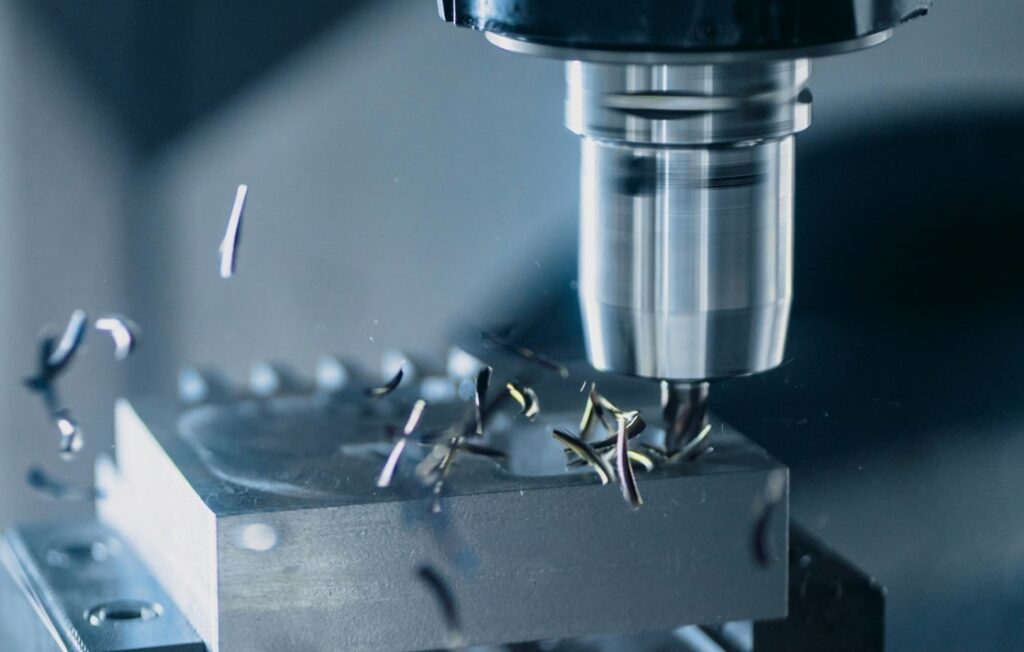
To stamp a knife blade, manufacturers typically utilize CNC machines. They also play a crucial role in the milling process for creating detailed blade designs.
CNC machining enables precise shaping of a knife from a billet, a solid block of metal. During this process, design instructions are programmed into a computer, directing the CNC machine to cut the billet into the desired blade shape. This method ensures highly accurate and repeatable shapes, essential for maintaining consistent quality across multiple knives.
However, the blade remains thick with only an outline after stamping and often does not perform at its best. Therefore, heat treatment is necessary to enhance its performance.
Annealing
Before we proceed to the next step, it’s important to note that some steel may undergo a preliminary heat treatment called annealing before shaping begins. This is more common among custom hand-forged knife makers. The purpose is to soften the steel, making it easier to shape, as some steel can be too hard to be processed initially.
Annealing is a heat treatment process where the steel is heated to a specific temperature and then cooled very slowly, often in a furnace. Annealing is essential for relieving internal stresses and ensuring the knife maintains a consistent microstructure, laying the groundwork for subsequent hardening processes.
4. Heat treatment
In knife making, heat treatment is a critical process that affects the hardness and durability of your blade. It involves a series of heating and cooling cycles that alter the microstructure of the steel to achieve desired mechanical properties.
Apart from the annealing process mentioned earlier, there are other key heat treatments including quenching, tempering, and normalizing. While heat treatments are often done manually, mass production relies on dedicated furnaces.
Quenching
Quenching triggers a chemical reaction that transforms austenite in steel into martensite, a harder crystalline structure. This stage involves heating the steel to a specific temperature and then rapidly cooling it in water, oil, or air. The choice of quenching medium affects the hardness and brittleness of the material. For instance, quenching in oil provides a slower cooling rate than water, reducing the risk of cracking. Oil quenching is commonly used for tool steel, particularly O1. It’s important to note that different types of steel require different quenching temperatures and cooling rates. The effectiveness of quenching plays a significant role in determining the hardness of the steel. This step is a critical test of a blacksmith’s skill.
Tempering
After quenching, the blade will be extremely hard yet brittle. To reduce this brittleness, you perform tempering. This involves reheating the steel to a lower temperature and then allowing it to cool slowly. The tempering process relieves stresses in the steel, improving toughness without losing too much hardness.
Normalizing
Normalizing is a process that involves heating the steel to a temperature slightly above its critical point and then allowing it to air cool. This step refines the grain structure of the steel, enhancing its toughness. Additionally, normalizing prepares the steel for subsequent heat treatment steps. It typically occurs after annealing and before quenching, and, like annealing, is an optional process.
5. Grinding and polishing
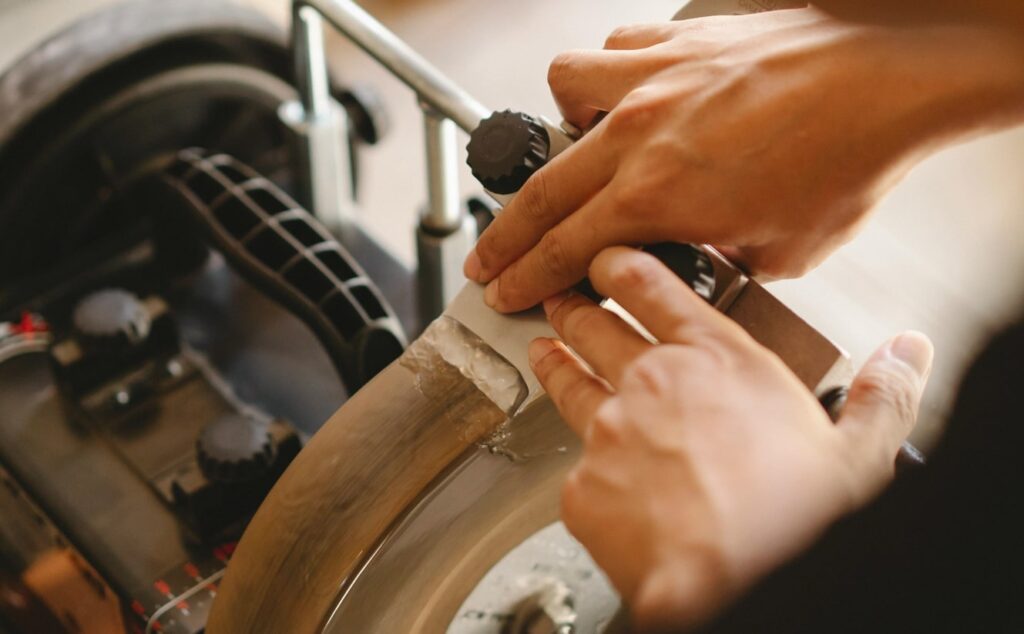
In the manufacturing process, heat treatment and grinding steps often intertwine. Some knives may require blade straightening and bevel creation before heat treatment, while others follow a different sequence. At Kegani, we don’t strictly adhere to a specific order. For instance, harder steel may be easier to grind and sharpen before heat treatment, but the order ultimately depends on the specific knife and materials involved. The complexity of the grind also plays a role; for example, a convex edge may require heat treatment before grinding.
Although we titled this paragraph and the next one “grinding and polishing” and “sharpening,” it’s worth noting that these terms are often used interchangeably by many knife makers. To clarify, here’s how we define these steps:
- Grinding: Involves straightening the blade and preparing it for further sharpening.
- Polishing: Focuses on creating a smooth surface and includes additional machine drilling and design tasks that may require a CNC machine.
- Sharpening: Occurs later in the manufacturing process. It involves sharpening the blade’s edge using low to high-grit whetstones to achieve the desired sharpness. Including creating the bevel.
Now let’s talk about grinding and polishing first.
Grinding
After being stamped out of the machine, the knife typically retains a rough shape. As the original steel block is often thicker than the final knife will be. Therefore, the first step in creating a sharp edge is to straighten the blade to a thinner profile. This not only facilitates the subsequent grinding and sharpening processes but also ensures a smoother surface for further refinement.
The initial grinding stage also involves rough grinding the knife blade using a water wheel. Called wet grinding. This step is crucial for removing any debris and particles that may still be clinging to the blade. Thereby offering a smoother surface for the subsequent grinding stages.
Polishing
In addition to straightening and rough grinding, we incorporate sanding and milling steps in this stage of the manufacturing process. Sanding, also known as sandblasting, serves the purpose of creating a matte finish on the blade. Even at this phase, the blade may still feel rough to the touch. Additionally, we may utilize this step to stamp patterns and logos onto the blade, adding a personalized touch.
Following sanding, milling is employed, utilizing CNC machines to carve out drills and specific designs of the knife. This process also involves drilling holes in the knife’s handle, facilitating easier attachment of scales later in the manufacturing process.
6. Sharpening
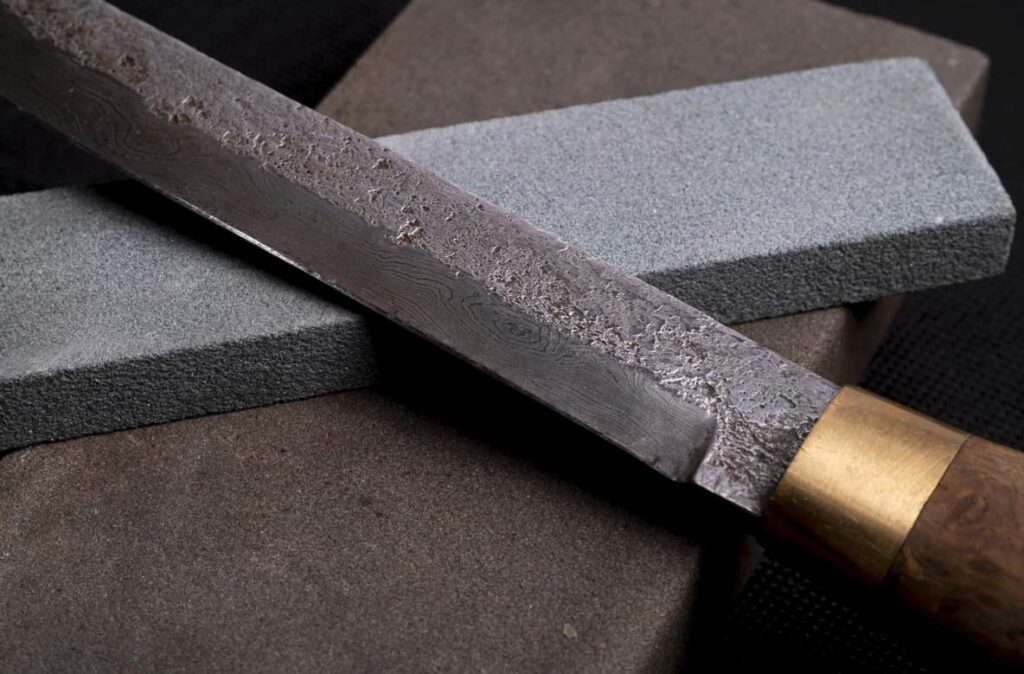
The blade is now ready for the final step: giving it a sharp edge. The first step is to sharpen the side of the blade’s edge to create the bevel. This is typically done using a low grit whetstone, a diamond stone, or on a sharpening belt.
After creating the initial bevel on the blade’s edge, we gradually refine and polish it by moving through higher grit levels during the sharpening process. Normally from 200 to 2000 grit. This progression ensures that the blade achieves a razor-sharp edge while also enhancing its overall finish and smoothness.
Additionally, the angle at which the blade is sharpened plays a critical role in its performance. Different knives may require different angles to achieve the desired sharpness and cutting efficiency. We meticulously adjust the sharpening angle to suit the specific knife design and intended use, ensuring optimal cutting performance.
Throughout the sharpening process, our experienced craftsmen carefully assess the blade’s edge, making any necessary adjustments to achieve the perfect balance between sharpness and durability. This attention to detail ensures that the knife not only cuts effortlessly but also maintains its edge over time, providing long-lasting performance and satisfaction to the user.
7. Assembly
In the line of OEM knife manufacturing, many customers request that we send them the individual components of the knife. Along with instructions on how to assemble them. This allows them to assemble the knife themselves, providing a sense of involvement in the process. Typically, these components include the handle scale, the opening mechanism and locks, and any additional utility tools that may be included.
But more often than not, we the manufacturers would assemble the knife. Moreover, we offer customization options to cater to diverse preferences and needs. This includes engraving for personalization. These customization options allow customers to tailor their knives to their specific tastes and requirements.
8. Quality control and testing
We conduct multiple tests to ensure that quality meets our standards. Also to make sure the previous manufacturing processes have been successful. Rigorous quality control is just as crucial as the other procedures. These tests are primarily designed to verify strength, edge retention, hardness, and resistance to corrosion.
Hardness test
The hardness of a knife is settled after heat treatment. Then we conduct definitive hardness tests to establish the Rockwell scale of the blade. The tool used for this test is called a Rockwell hardness tester, which employs a diamond cone indenter to lightly penetrate the blade. The machine then calculates the result and provides a numerical indication of the blade’s hardness on the Rockwell scale.
Sharpness and edge retention test
A knife will inevitably lose sharpness over time, but end customers can restore it. What’s more important is how long the blade’s edge can retain its sharpness, reducing the need for frequent sharpening. It also matters if we, the manufacturer, have done a great job sharpening the knife initially.
Sharpness and edge retention tests are conducted using the same machine, which is simpler than you might think. The machine lets the knife cut paper, then calculates the number of paper cuts made in the first few rounds and the overall depth of the cuts. The measurements of Initial Cutting Performance (ICP) and Total Card Cuts (TCC) will represent the sharpness and edge retention of the blade respectively.
Toughness test
Toughness tests assess how well a knife can withstand various forces and conditions it may encounter during use. Tension tests are crucial to understanding how the material and construction of your knife handle mechanical stress. Tests simulating repeated usage help verify the longevity of the knife under typical conditions.
Corrosion test
We typically employ the classic salt spray test to observe how the blade responds to harsh environments. Rust occurs when the blade is consistently exposed to air and water. So we simulate these conditions to document the blade’s reaction over a span of several days or even weeks.
Start Working with a Professional Now
9. Packaging and distribution

After the knives are crafted, it proceeds to the packaging stage. It’s a crucial aspect to ensure their safe delivery to customers or retailers. At the factory, the knives are typically first enclosed in a primary protective barrier to prevent damage to the blades or handles. This could involve sheaths, blister packages, or individual boxes designed to fit the knife’s dimensions snugly.
In mass production settings, the primary packaging serves both protective and branding purposes. Machines with integrated slicing, circular, and crosscut capabilities often handle adding additional safety elements, like clamps or fasteners, to keep the knife secure.
Next, consider the secondary packaging. This is where the individually packed knives are placed into larger boxes or cartons to be grouped together for distribution. The secondary packaging is primarily concerned with logistics, making it easier to transport large quantities. These cases are usually made of durable materials like corrugated cardboard to withstand the rigors of transit.
Custom packaging is crucial for brand recognition, yet many factories don’t offer this service to their customers. Kegani provides private labeling services, offering various boxing options to meet individual needs. You can learn more about it through this page.
Once packaged, the knives are ready for distribution. They may be stored temporarily in a warehouse or sent directly to distributors. During this phase, care is taken to ensure the knives are not exposed to conditions that could initiate corrosion or other damage.
For the distribution stage, logistical efficiency becomes paramount. The knives, now packaged, are transported through a network that may include trucks, ships, or planes, eventually reaching their destination—be it a retail outlet, a warehouse for online merchants, or directly to consumers. Throughout this journey, preserving the integrity of your knives is the central objective.
Working with Kegani
Knife manufacturing is a complex job that requires reliable people. Now that you’ve learned more about the general steps of knife manufacturing, we hope you feel more at ease. Kegani offers OEM knife manufacturing services, ensuring that knives meet your specifications and industry standards.
We welcome collaborations with aspiring knife designers and entrepreneurs looking to sell their own knives. If you have an interesting idea, reach out to us today! Partnering with Kegani allows you to contribute to the creation of knives known for their precision and reliability in the market.
